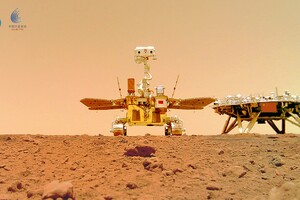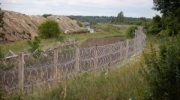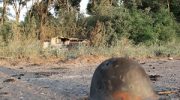Chinese researchers do not rule out the presence of water under the soil layer

Chinese rover Zhurong found evidence that water remained on Mars much longer than expected, according to CNN.
Zhurong landed on a large plain called Utopia in the Northern Hemisphere Mars on May 15, 2021 – the same place where NASA's “Viking-2” landing module landed in 1976.
The main mission of the Chinese rover, which lasted three months, was to find signs of ancient life. He studied minerals, the environment and the distribution of water and ice on the plain, which is part of the largest impact crater in the Martian northern lowlands. The rover continues to collect information and send it to the Tianwen-1 orbital module, which orbits the planet.
Data from an initial rover study of the basin suggest that Utopia Planitia had water at a time when many scientists considered Mars dry and cold.
A study detailing the results was published Wednesday in the journal Science Advances.
Mars was once warm and humid, but billions of years ago, something changed and the planet turned into a dry cold desert, as it is to this day. The Red Planet entered this period in the so-called Amazon era, which began about 3 billion years ago and continues to this day.
China has published new photos of Mars taken by the rover Zhurong. “The most important and recent point is that we found hydrogenated minerals at the landing site, and these minerals are the result of interactions with groundwater,” said study lead author Yang Liu, a researcher at the State Space Laboratory of the Chinese Academy of Sciences.
In particular, the researchers analyzed data from the rover Zhurong on the identified sediments and minerals. They found hydrated silica and sulfates similar to hydrated minerals found by other missions exploring different regions of the red planet.
Researchers have determined that the soil at the Zhurong rover's landing site is a layer of hard crust. Such a crust can form when a significant amount of water, whether groundwater rises or melting subsurface ice, turns the soil into a hard crust due to evaporation.
The discovery of this layer of hard crust, which is thicker than hard crust, probably formed by atmospheric water vapor discovered by other Martian missions, suggests that the Utopia Plain was more active tens of millions of years ago than scientists expected.
This adds to the amount of evidence found by Martian missions that the red planet went through several wet and warm, and then dry and cold cycles, rather than one abrupt change in climate.
According to Yang Liu, these climatic tides could be the result of volcanic activity or the impact of other celestial objects.
Read also: China showed video of landing its spacecraft on Mars
China has become the second country to pass on a rover over Mars.
The discoveries came as a surprise to researchers, as previous observations of orbiters have revealed traces of hydrogenated minerals.
The Utopia Plain is of interest to scientists, as some suggest “The discovery of hydrogenated minerals is therefore an important indication of the region's geological and aquatic history and the evolution of Mars' climate,” Yang Liu said.
He also said. It is hoped that the rover will be able to analyze the sediments of the plain to learn more about the history of water in the region.
what are the future to investigators could use during manned missions to Mars.




